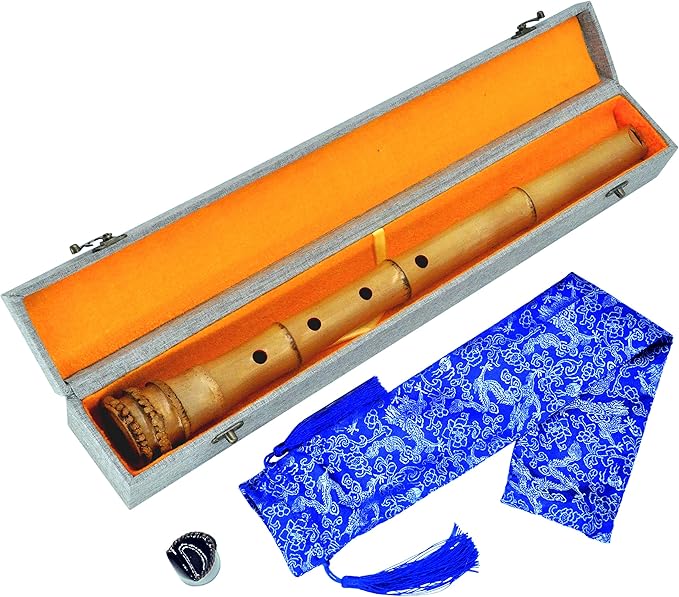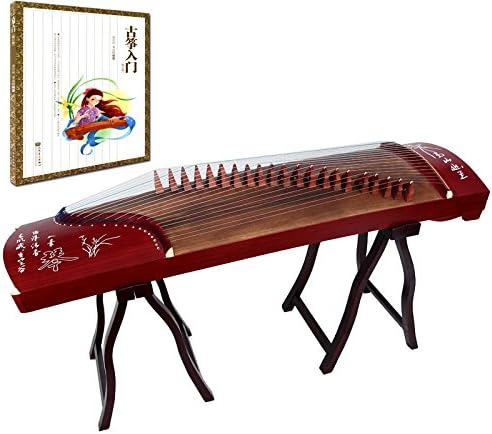Author: ShiroiYozora 05.09.2024
5 Mind-Blowing Japanese Traditional Instruments That Will Make You Question Everything You Know About Music
Contents
- 1 5 Mind-Blowing Japanese Traditional Instruments That Will Make You Question Everything You Know About Music
- 2 Photo by veronikasz Pixabay
- 3 Music Zone!
Have you ever found yourself lost in the enchanting melodies of Japanese music? If so, you're not alone! Japanese traditional instruments have a way of captivating listeners with their unique sounds and rich history. Whether you're a devoted fan of Japanese music or a history buff looking to explore new cultural treasures, get ready to embark on a musical journey that will leave you in awe.
In this blog post, we'll dive into the world of traditional Japanese instruments, focusing on five incredible examples that might just change your perspective on music altogether. So, grab a cup of green tea, settle in, and let's explore these fascinating instruments together!
This site contains affiliate links to products. We may receive a commission for purchases made through these links. Learn more.
The Magic of Japanese Musical Heritage
Before we jump into our list of mind-blowing instruments, let's take a moment to appreciate the broader context of Japanese musical tradition. Japanese music, like many aspects of the country's culture, has evolved over centuries, blending influences from various periods and regions. The result is a rich tapestry of sounds that reflect Japan's history, spirituality, and artistic sensibilities.
Traditional Japanese instruments often play a crucial role in various art forms, such as kabuki theater, noh drama, and gagaku court music. They're not just tools for making music; they're vessels of cultural expression and storytelling. With that in mind, let's dive into our list of five incredible instruments that showcase the diversity and ingenuity of Japanese musical craftsmanship.
1. The Haunting Whisper of the Shakuhachi
What is the Shakuhachi?
The shakuhachi is a bamboo flute that might look simple at first glance, but don't let its appearance fool you! This instrument has a history stretching back over a thousand years and produces some of the most hauntingly beautiful sounds you'll ever hear.
The Shakuhachi's Unique Features
- Made from a single piece of bamboo
- Has five finger holes and a mouthpiece
- Typically about 54.5 cm long (though lengths can vary)
The Sound and Playing Technique
What sets the shakuhachi apart is its incredibly expressive nature. Players can create a wide range of tones and effects by changing their breath control and the angle at which they blow into the instrument. The result? Everything from whisper-soft notes to piercing, wind-like sounds that seem to come from another world.
"The shakuhachi isn't just an instrument; it's a gateway to meditation and self-discovery." - Ancient Zen saying
Interestingly, the shakuhachi has a strong connection to Zen Buddhism. In fact, it was often used by monks as a tool for meditation and spiritual practice. Can you imagine using a musical instrument as a path to enlightenment? That's the power of the shakuhachi!

Begin your Japanese music adventure with a shakuhachi.

Get your first shakuhachi guide here.
2. The Thunderous Taiko Drums
Introducing the Taiko
When you think of Japanese drums, the taiko is probably what comes to mind. These large, barrel-shaped drums are not just instruments; they're a spectacle in themselves. Taiko performances are known for their energy, precision, and sheer physical demands on the players.
The Varieties of Taiko
- Odaiko: The largest taiko, often used as the centerpiece in performances
- Chudaiko: Medium-sized drums, the most common in taiko ensembles
- Shime-daiko: Smaller, high-pitched drums used for keeping rhythm

Photo by veronikasz Pixabay
The Cultural Significance of Taiko
Taiko drums have been part of Japanese culture for centuries, playing roles in religious ceremonies, festivals, and even on the battlefield to motivate troops. Today, taiko drumming has evolved into a highly respected art form, with professional groups performing intricate, choreographed pieces that combine music, dance, and martial arts-like movements.
What's truly mind-blowing about taiko is how it engages not just your ears, but your entire body. The deep, resonant beats of the drums can literally be felt in your chest, creating an immersive experience that goes beyond just listening to music. It's no wonder taiko performances often leave audiences breathless and exhilarated!


Start your taiko journey with the Taiko no Tatsujin bundle on Nintendo Switch.
3. The Ethereal Tones of the Koto
Discovering the Koto
Imagine a long, wooden instrument with strings stretched across it, producing sounds that seem to float on air. That's the koto, Japan's national instrument and a true marvel of musical engineering.
Key Features of the Koto
- Typically has 13 strings (though some modern versions have more)
- Made from kiri wood (paulownia)
- Played with three finger picks worn on the right hand
The Koto's Place in Japanese Music
The koto has been a staple of Japanese classical music for over a thousand years. It's often associated with the imperial court and has a reputation for elegance and refinement. But don't let that fool you into thinking it's stuffy or boring!
In the hands of a skilled player, the koto can produce an incredibly diverse range of sounds. From delicate, harp-like melodies to more percussive, energetic pieces, the koto's versatility is truly impressive. It's even found its way into modern genres, with some contemporary musicians incorporating it into jazz and rock compositions.
"The koto is like a mirror of the soul; it reflects the emotions of both the player and the listener." - Traditional Japanese saying
What's particularly fascinating about the koto is how it challenges our Western notions of melody and harmony. The instrument is typically tuned to pentatonic scales, creating a sound that might seem "exotic" to ears accustomed to Western music. But spend some time listening to koto music, and you might find yourself questioning everything you thought you knew about musical structure and composition!
4. The Mesmerizing Shamisen
Meet the Shamisen
If the koto is like Japan's classical guitar, then the shamisen is its rock star cousin. This three-stringed instrument might look a bit like a banjo, but its sound is uniquely Japanese and utterly captivating.
Shamisen Basics
- Has a square body covered with cat or dog skin
- Three strings, traditionally made of silk (though modern versions may use nylon)
- Played with a large pick called a bachi
The Versatility of the Shamisen
What makes the shamisen truly mind-blowing is its incredible versatility. It's equally at home in traditional kabuki theater performances, folk music, and even modern pop and rock. The playing style can range from gentle, melodic plucking to aggressive, percussive strumming that sounds almost like a drum.
One of the most interesting aspects of shamisen playing is the use of sawari, a buzzing effect created by the strings vibrating against the neck of the instrument. This deliberate "imperfection" in the sound adds depth and character to the music, challenging our ideas about what constitutes a "good" musical tone.
The shamisen also often accompanies singing, with many traditional styles featuring performers who both play and sing. This dual role requires immense skill and concentration, as the player must coordinate their playing with their vocals while also conveying the emotion of the song.

5. The Mystical Sounds of the Sho
Introducing the Sho
Last but certainly not least on our list is the sho, an instrument that truly defies expectations. At first glance, it might look like a small organ or a bundle of bamboo pipes. But the sound it produces is unlike anything you've likely heard before.
The Unique Features of the Sho
- Consists of 17 bamboo pipes
- Has a wind chest that the player blows into
- Can produce multiple notes simultaneously
The Sho's Otherworldly Sound
The sho is perhaps the most mind-blowing instrument on our list because of its utterly unique sound. It's often described as ethereal or celestial, with sustained chords that seem to hang in the air. In fact, the sho is sometimes said to represent the phoenix in Japanese mythology, with its sound evoking the cry of this legendary bird.
What's particularly fascinating about the sho is its ability to play chords. This might not seem remarkable if you're used to Western instruments like the piano or guitar, but in the context of traditional Japanese music, it's quite unusual. The sho often provides a harmonic foundation in gagaku (imperial court music) ensembles, creating a shimmering backdrop for other instruments.
"The sho doesn't just make music; it paints the air with sound." - Ancient Japanese proverb
Playing the sho requires incredible breath control and dexterity. Players must maintain a constant airflow while fingering complex chord patterns. It's a testament to human ingenuity and the endless quest to create new and beautiful sounds.
Conclusion: A New Perspective on Music
As we've explored these five mind-blowing traditional Japanese instruments, I hope you've gained a new appreciation for the diversity and creativity of musical expression. From the meditative tones of the shakuhachi to the thunderous energy of taiko drums, the elegant koto, the versatile shamisen, and the otherworldly sho, each of these instruments offers a unique window into Japanese culture and musical tradition.
These instruments challenge our preconceptions about what music can be. They invite us to listen with fresh ears and open minds, to explore new textures, timbres, and techniques. Whether you're a dedicated fan of Japanese music or a curious newcomer, there's always more to discover in this rich musical landscape.
So, the next time you listen to music, why not seek out some of these traditional Japanese instruments? You might be surprised at how they expand your musical horizons and perhaps even inspire you to pick up an instrument yourself. After all, the world of music is vast and wonderful, and there's always room for new sounds and new experiences. Happy listening!

Music Zone!
CDs and More!
Blog Posts!
Shiroi Castle is a participant in the Amazon Services LLC Associates Program, an affiliate advertising program designed to provide a means for sites to earn advertising fees by advertising and linking to Amazon.com. Amazon, the Amazon logo, AmazonSupply, and the AmazonSupply logo are trademarks of Amazon.com, Inc., or its affiliates.
Some of the graphics used to design the website has been created by Freepik www.freepik.com, using Adobe Firefly AI or Microsoft Designer.









